
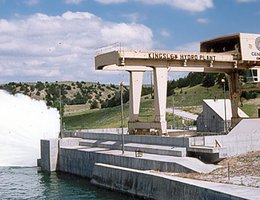
The production of hydroelectric power is another major benefit of Central’s project. Three hydroplants along the Supply Canal (Jeffery Hydro near Brady and the Johnson No. 1 and Johnson No. 2 Hydros near Lexington) and Kingsley Hydroplant (below Kingsley Dam) have the combined capacity to generate up to 113,000 kilowatts of electricity to help meet Nebraska’s energy needs. To put that in perspective, 113,000 kilowatts is enough electricity to meet the residential needs of a city with 38,000 homes. All four hydroplants are operated from the Gothenburg Control Center.
The Kingsley Hydroplant was added to Central’s project in 1984. The 50,000-kilowatt plant was built to meet Nebraska’s growing demand for electricity and in response to high fossil-fuel prices in the 1970s. The large spray of water coming out of the hydroplant is passing through the bypass valve. Oxygen is added to the water during the process, improving the oxygen content for fish in Lake Ogallala, which lies immediately below Kingsley Dam.
Hydroplants have no fuel costs and are typically less expensive to maintain than power plants that use coal or natural gas or nuclear energy. They can generate electricity upon demand, unlike steam-driven plants that require several hours to increase energy production if they’ve been off-line. Hydropower provides energy without producing waste products or emissions into the air. The fuel, water, is renewable and provides many other benefits such as irrigation and recreation. And, as is evident throughout Central’s system, wildlife flourishes in the surrounding aquatic environment.
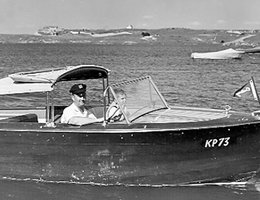
Water-related recreation was limited in Nebraska prior to construction of the Central District’s chain of lakes and reservoirs. Soon after the lakes filled with water, boats like this wooden craft (shown on Lake McConaughy in 1949) began to appear. Fishing, waterfowl hunting, water-skiing, and many other water-based recreational activities also began to grow in popularity.
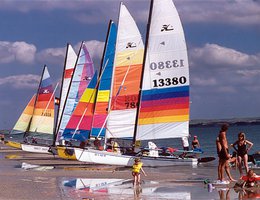
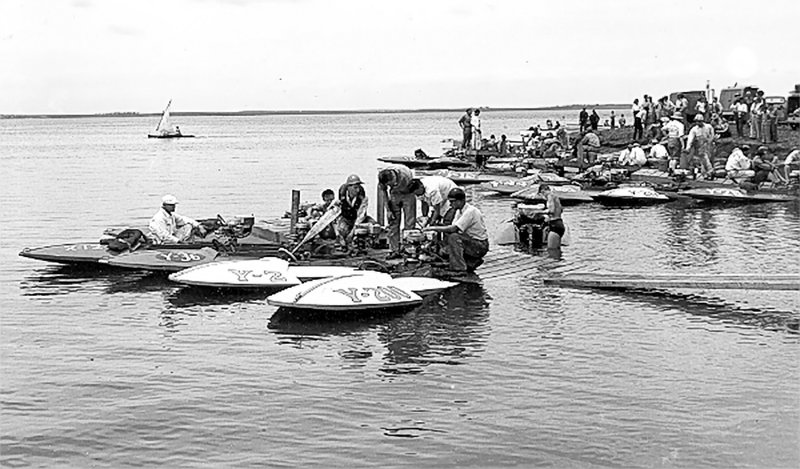
The Central District’s project provides the public with opportunities to enjoy a wide range of recreational activities. The lakes created by the Tri-County Project cover a total of more than 36,000 surface acres and are available to the public for boating, fishing, water-skiing, sailing, jet skiing, swimming, hunting, and other recreational pursuits. Sandy beaches and a wide variety of game fish make the Lake McConaughy/Lake Ogallala area one of the most popular recreation sites in Nebraska.
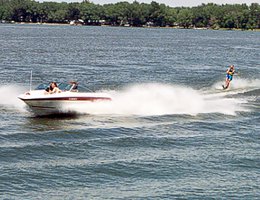
Johnson Lake is another popular recreation area. Located between Lexington and Elwood, the lake’s shoreline is occupied by more than 800 cabins and homes. Two State Recreation Areas operated by the Nebraska Game and Parks Commission attract thousands of campers and day-use visitors each year. Jeffrey Lake near Brady also has an extensive cabin development and a public boat ramp provides access to the lake.
A total of almost 6,000 acres adjacent to the Central District’s lakes are designated as State Recreation Areas and another 6,800 acres are set aside as Wildlife Management Areas open to public use. The Supply Canal and small lakes also provide abundant opportunities for hunting and fishing.